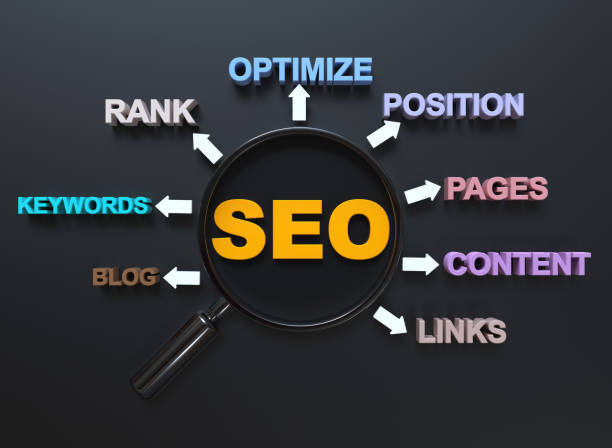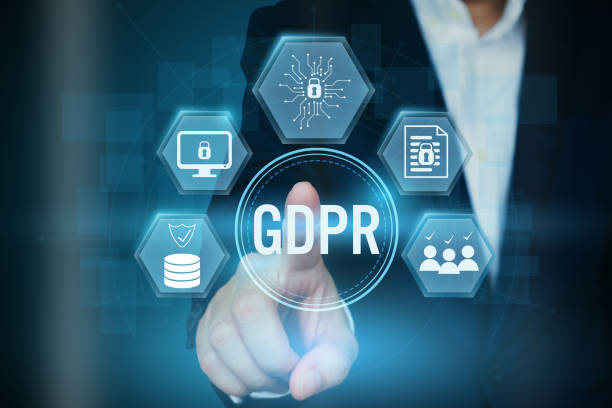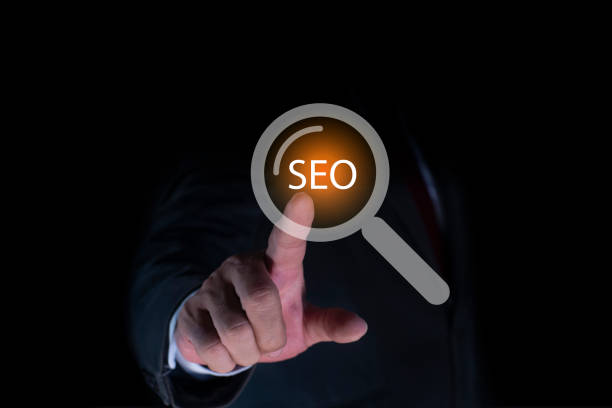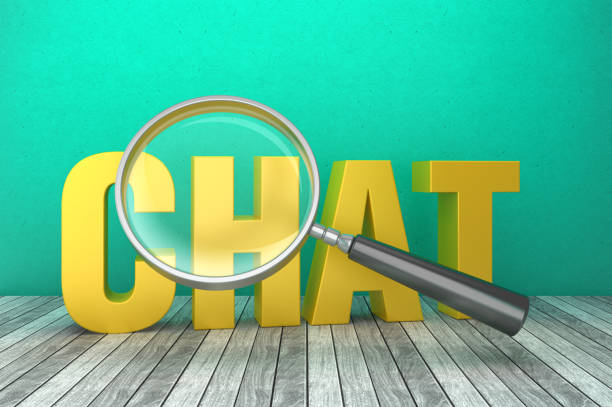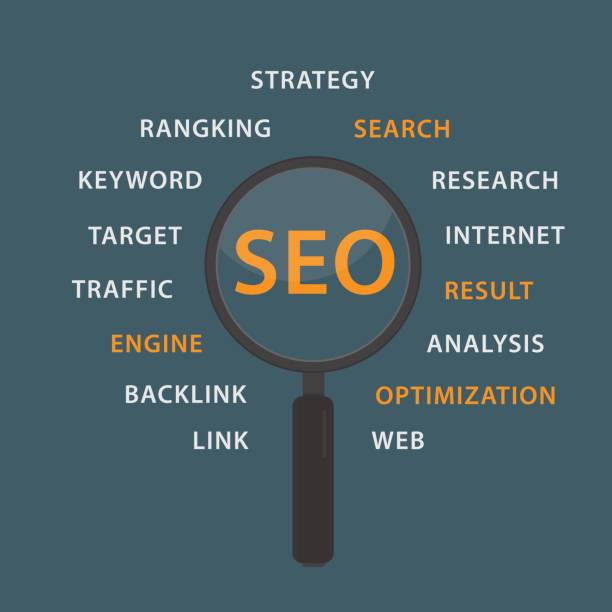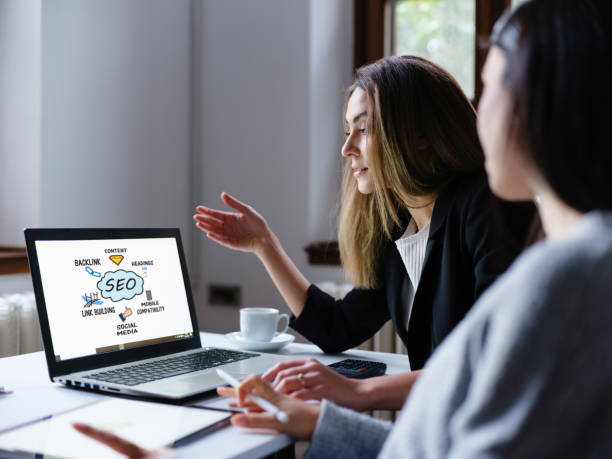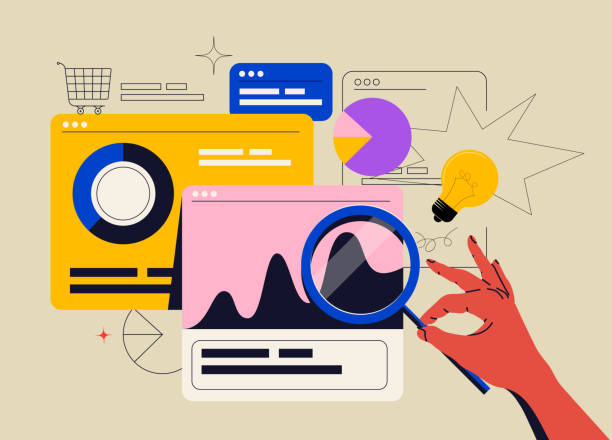Introduction to the Importance of On-Page SEO and its Role in Online Success
In today’s competitive internet world, a successful online presence is not achieved merely by having a beautiful website; it requires being seen by the target audience.
This is where the concept of #On-Page SEO, or on-page optimization, shows its importance.
On-Page SEO refers to a set of actions you perform within your website and its pages to make your website more understandable and appealing to search engines like Google.
These actions include optimizing #keywords, #titles, #content, and URL structure.
Without a strong On-Page SEO strategy, even the best content may get lost among the vast amount of digital information.
This chapter explains why investing in this aspect of SEO is essential and how it can help improve your website’s ranking in search results.
In fact, a deep understanding of how Google’s algorithms work and the correct implementation of On-Page SEO principles are considered the foundation of any successful digital marketing strategy.
This is a crucial aspect for attracting organic traffic and increasing your website’s credibility.
Did you know that 94% of a company’s first impression is related to its website design?
RasaWeb, by offering professional corporate website design services, helps you create the best first impression.
✅ Create a professional and trustworthy image for your brand
✅ Easier attraction of potential customers and improved online presence
⚡ Get free corporate website design consultation
Keyword Research: The Foundation of Every On-Page SEO Strategy
Keyword research is the starting point and perhaps the most important step in any successful On-Page SEO strategy.
This process helps you understand exactly what phrases and terms your target audience uses for searching.
This vital information is then used to create content that addresses their needs.
Choosing the right keywords means identifying phrases that have high search volume but relatively less competition, or long-tail keywords that, although having lower search volume, indicate user intent more precisely and lead to higher conversion rates.
Tools like Google Keyword Planner, Ahrefs, Semrush, and Moz Keyword Explorer can be very helpful in this regard.
After identifying the main keywords, you should naturally place them in your title, meta descriptions, headings, and the body of your content.
Don’t forget that the main goal is to produce useful and high-quality content for the user, not just stuffing the page with keywords.
This specialized approach not only helps improve your ranking in search results but also provides a better user experience.
Content Optimization: The Golden Key to On-Page SEO
Content is king; this phrase holds truer than ever in the world of On-Page SEO.
After keyword research, it’s time to produce high-quality content and optimize it for search engines.
Each page of your website should have a main keyword and several secondary keywords naturally embedded in the text.
Using appropriate heading structures (H1 for the main title, H2, H3, etc., for subtitles) helps search engines better understand the structure and main topic of your content.
Additionally, the Meta Description and Title Tag should contain main keywords and be engaging to encourage users to click.
Your content should be complete, accurate, and unique.
Avoid copying content, as this harms your website’s credibility.
This explanatory and guiding approach to content production is a foundation for attracting sustainable organic traffic.
On-Page SEO is a continuous process, and content optimization is the heart of this process.
The table below lists some of the most important content optimization factors for On-Page SEO:
| Factor | Description | Importance in On-Page SEO |
|---|---|---|
| Page Title (Title Tag) | The most important element for search engines and users. Should include the main keyword. |
High |
| Meta Description | An engaging summary of the content, enticing users to click. Should include keywords. |
Medium (Indirect) |
| Heading Structure (H1-H6) | Organizing content, improving readability, and assisting search engines. | High |
| Keywords in Text | Natural and logical use of primary and secondary keywords throughout the content. | High |
| Content Length | Comprehensive and complete content that effectively answers user questions. | High |
Click here to preview your posts with PRO themes ››
Optimized URL Structure for On-Page SEO
The URL structure of your website pages plays a vital role in On-Page SEO.
A good URL should be short, readable, and include the main keyword of the page.
This not only helps search engines understand the page content but is also clearer and more understandable for users.
Optimized URLs increase user trust and make it more likely for users to share your link.
Avoid using special characters, meaningless numbers, and complex phrases in your URL.
For example, instead of “yoursite.com/?p=12345″, it’s better to use “yoursite.com/blog/onpage-seo-guide”.
Using hyphens (-) instead of underscores (_) to separate words in URLs is also recommended, as Google recognizes hyphens better as word separators.
This is an important explanatory and educational aspect in the effective implementation of On-Page SEO that is often overlooked but has a significant impact on your site’s overall performance.
Are you frustrated with your e-commerce site’s low conversion rate? RasaWeb transforms your e-commerce site into a powerful tool for attracting and converting customers!
✅ Significant increase in visitor-to-buyer conversion rate
✅ Unparalleled user experience to boost customer satisfaction and loyalty⚡ Get free consultation from RasaWeb!
Image Optimization and Its Impact on On-Page SEO
Images play an important role in website visual appeal and user experience, but if not optimized correctly, they can harm site loading speed and consequently negatively impact On-Page SEO.
Image optimization involves several key steps: first, compressing images to reduce file size without significant loss of quality.
Tools like TinyPNG or image optimization web packs in CMSs can be helpful.
Second, using descriptive file names that include relevant keywords (e.g., “on-page-seo-graphic.jpg” instead of “IMG_001.jpg”).
Third, filling in the Alt Text for each image.
Alt Text is not only useful for visually impaired users but also helps search engines understand the image content and appear in image search results.
This guiding explanation helps you leverage the full potential of images to improve your On-Page SEO performance and provide a better user experience.
Site Speed and Its Connection to On-Page SEO
Site loading speed is one of the vital factors in On-Page SEO and user experience.
Google has officially stated that site speed is a ranking factor, and users also expect pages to load quickly.
Slow websites lead to an increase in Bounce Rate, as users don’t wait and quickly leave the site.
To improve site speed, you can use various methods: optimizing images (as explained previously), using caching, compressing CSS and JavaScript files, using a CDN (Content Delivery Network), and choosing a powerful host.
Core Web Vitals, a set of user experience metrics introduced by Google, includes LCP (Largest Contentful Paint), FID (First Input Delay), and CLS (Cumulative Layout Shift).
Improving these metrics directly impacts your On-Page SEO and indicates a user-friendly site.
This is an important analytical and technical aspect that cannot be overlooked and requires continuous review and optimization.
The Role of User Experience (UX) in Improving On-Page SEO
User Experience (UX) and On-Page SEO are two sides of the same coin.
Google increasingly emphasizes the importance of user experience, as its ultimate goal is to provide the best results to users.
A website with strong UX not only keeps users satisfied but also sends positive signals to search engines, leading to improved rankings.
Factors such as responsive design (Mobile-Friendly) for correct display on mobile and tablet, easy and intuitive navigation, high readability (using appropriate fonts, sufficient white space, short paragraphs), and minimal 404 errors all contribute to improving user experience and consequently On-Page SEO.
Does your site load quickly? Is it easy to find information on it? Is its layout pleasant for visitors? The answers to these questions determine the quality of your user experience.
For a comprehensive On-Page SEO strategy, you should always prioritize your users.
Click here to preview your posts with PRO themes ››
This table compares two different approaches to optimizing user experience for On-Page SEO:
| Feature | Optimal Approach (Positive) | Inappropriate Approach (Negative) |
|---|---|---|
| Responsiveness | Responsive design for all devices | Non-responsive website and poor display on mobile |
| Site Navigation | Clear menus and logical tree structure | Cluttered and confusing menus, broken links |
| Content Readability | Appropriate font, short paragraphs, correct heading usage | Long paragraphs, small and unreadable fonts |
| Bounce Rate | Low (users stay longer on the site) | High (users immediately leave the site) |
| CTA (Call to Action) | Clear and visible to the user | Hidden or unclear |
Internal Linking: A Powerful Strategy in On-Page SEO
Internal linking is one of the vital and often overlooked elements in an On-Page SEO strategy.
This process involves creating links between different pages of your website.
Internal links not only help search engines understand your site’s structure and crawl pages, but they also distribute link equity throughout your website.
Additionally, these links improve user experience and help users discover more related content, which leads to increased time on site and reduced bounce rate.
When creating internal links, use descriptive anchor texts that include keywords.
Avoid linking to irrelevant pages or over-linking within a single paragraph.
A strong internal linking strategy acts like a neural network for your site, increasing the value of each page in the eyes of search engines.
This is a practical guide and expertise for strengthening overall On-Page SEO performance.
Are you tired of your e-commerce site getting visitors but no sales? RasaWeb solves your main problem with professional e-commerce website design!
✅ Significant sales increase with targeted design
✅ Flawless user experience for your customers
⚡ Get free consultation!
Schema Markup and Advanced On-Page SEO
Schema Markup, also known as Structured Data, is semantic code that you can add to your website to help search engines better understand your content.
These codes highlight specific information such as reviews, ratings, product prices, contact information, recipes, and events.
By using schema, your content can appear as Rich Snippets or rich results on the search engine results page (SERP), which in turn leads to an increased click-through rate (CTR).
Correct implementation of Schema Markup is an important part of advanced On-Page SEO and indicates that your site operates beyond the basics.
Google’s Schema Markup Validator tool can help you validate schema codes.
This is a specialized and educational aspect that can differentiate your website in search results and give you a significant competitive advantage in the field of On-Page SEO.
Monitoring and Analyzing On-Page SEO for Continuous Improvement
SEO is not a static process; rather, it is a continuous journey.
To ensure the effectiveness of your On-Page SEO strategy, you must continuously monitor and analyze your site’s performance.
Tools like Google Search Console and Google Analytics provide valuable information about how users interact with your site and how it ranks in searches.
You can identify the keywords users use to find you, the pages that perform best, and the pages that need improvement.
Monitoring crawl errors, indexing issues, and site speed problems is also essential.
Based on these analyses, you can make necessary changes and improve your On-Page SEO strategy.
This analytical and informative approach (considering continuous algorithm changes) allows you to always stay one step ahead and prevent ranking drops.
Staying updated with the latest Google algorithm changes is also part of this continuous monitoring to always achieve the best results in On-Page SEO.
Click here to preview your posts with PRO themes ››
Frequently Asked Questions
| Question | Answer |
|---|---|
| What is Meta Title and why is it important in On-Page SEO? | The meta title is the most important element of On-Page SEO, displayed at the top of the browser tab and in search results. This title helps search engines and users understand the main topic of the page and should include the primary keyword. |
| What role does Meta Description play in On-Page SEO? | The meta description is a short summary of the page content displayed in search results below the title. Although it doesn’t directly impact ranking, its attractiveness can increase the click-through rate (CTR). |
| How should keywords be used in page content? | Keywords should be used naturally and relevantly in strategic places such as the title, headings, first paragraph, and body of the text. Avoid excessive keyword stuffing. |
| What is the importance of high-quality and comprehensive content in On-Page SEO? | High-quality, unique, informative, and comprehensive content that addresses user needs is of high importance. Search engines give higher rankings to content that creates real value. |
| What is the use of heading tags (H1-H6) in On-Page SEO structure? | Heading tags (H1, H2, H3, etc.) are used to structure content and indicate the importance of different sections. H1 is the main title of the page, and each page should have only one H1. Other tags are used for subtitles. |
| How to optimize images for improving On-Page SEO? | To optimize images, use descriptive Alt Text that includes relevant keywords, reduce the image file size without significant loss of quality, and use meaningful and relevant file names. |
| What are the characteristics of a friendly URL for On-Page SEO? | A friendly URL should be short, readable, descriptive, include main keywords, and be free of extra characters. The URL structure should be hierarchical and logical to be understandable for both users and search engines. |
| How does Internal Linking help On-Page SEO? | Internal linking, by connecting related pages, helps users and search engine crawlers better understand the site structure, transfers page authority, and increases user dwell time on the site. |
| What is the impact of page loading speed on On-Page SEO? | High loading speed is crucial for both user experience and SEO ranking. Slower pages might be overlooked by search engines and lead to an increased Bounce Rate. |
| Why is Mobile-Friendliness highly important in On-Page SEO? | Given the increasing number of searches via mobile devices, having a responsive and mobile-friendly site is essential for user experience and ranking in search results (Google’s mobile-first indexing). |
And other services of RasaWeb Advertising Agency in the field of advertising
Smart Social Media: Revolutionize online growth with the help of user experience customization.
Smart Marketing Automation: Professional optimization to increase click-through rates using attractive UI design.
Smart Advertorials: A professional solution to boost sales with a focus on precise audience targeting.
Smart Website Development: Designed for businesses looking to manage campaigns through custom programming.
Smart Advertising Campaigns: A fast and efficient solution for user engagement with a focus on intelligent data analysis.
And over a hundred other services in the field of internet advertising, advertising consultation, and organizational solutions
Internet Advertising | Advertising Strategy | Advertorials
Sources
Complete On-Page SEO Training on Seorooz
Comprehensive On-Page SEO Guide on Hamyar SEO
What is On-Page SEO? – Iran Server
?At RasaWeb Afarin Digital Marketing Agency, we help your business shine brightly in the online world. From secure and professional website design to comprehensive SEO strategies and targeted content creation, we are your reliable partner on the path to digital growth.
📍 Tehran, Mirdamad Street, next to Bank Markazi, Kazeroon Jonubi Alley, Ramin Alley, No. 6


